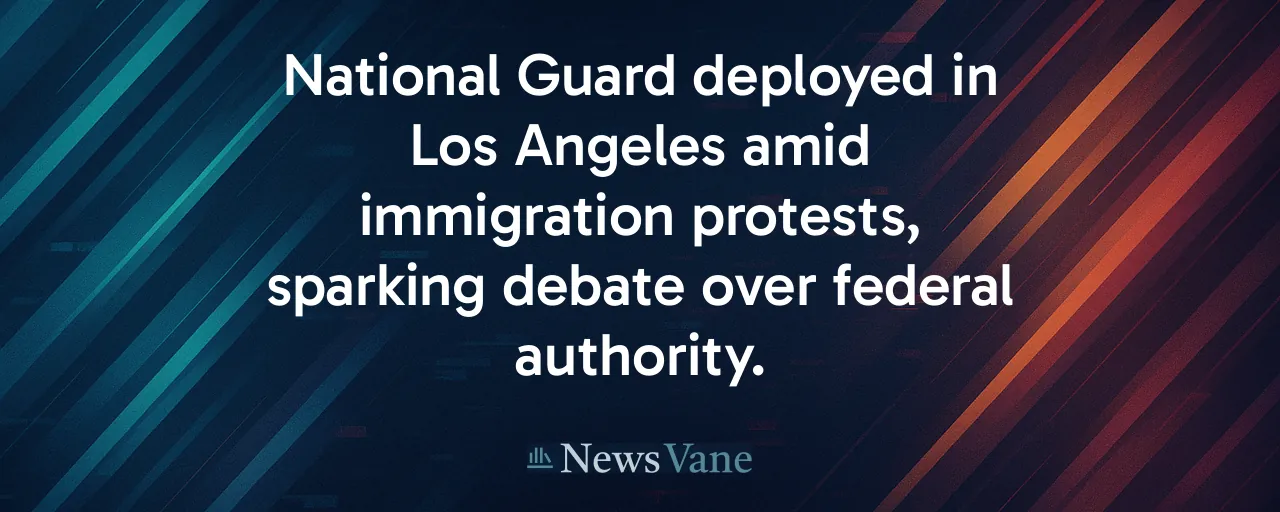A City on Edge
On June 8, 2025, Los Angeles residents faced an unsettling reality: 4,700 National Guard troops and Marines patrolling their streets. President Donald Trump ordered the deployment to shield federal immigration personnel amid protests in Compton and Paramount. The decision, however, sparked intense controversy, igniting a clash over federal power, state authority, and the use of military force in civilian unrest.
The protests began over immigration enforcement actions, drawing thousands to demonstrate. Local police had largely restored order by the time troops arrived, reporting just 44 arrests. Yet the arrival of soldiers, clad in riot gear, seemed to escalate tensions. Larger crowds gathered, and for many, the military presence suggested control, not protection.
The conflict centers on a dispute between President Trump and California Governor Gavin Newsom. By federalizing the California National Guard without Newsom's approval, Trump prompted accusations of overstepping legal bounds. Newsom, addressing the public, warned that the move threatens state autonomy nationwide. Los Angeles has become a flashpoint for a broader debate about governance and democratic principles.
Navigating Legal Limits
The deployment rests on 10 U.S.C. §12406, a federal law allowing the president to activate state National Guard units during rebellion, invasion, or when federal laws cannot be enforced. Trump's June 7 memorandum labeled the Los Angeles protests a 'form of rebellion,' but many argue the unrest, marked by limited property damage, does not meet this standard. California's lawsuit contends the action violates federal statutes and the Constitution by bypassing gubernatorial consent.
Past uses of this authority, such as during civil rights enforcement in the 1950s and 1960s, involved clear violations of federal law. In contrast, Los Angeles authorities maintain they managed the situation effectively. Legal experts note that while presidents enjoy wide latitude in such decisions, courts can examine whether legal requirements were met, a question now under judicial review.
The Posse Comitatus Act of 1878 further complicates the situation. It prohibits federal troops from engaging in law enforcement unless explicitly authorized. Federalized Guard units, operating under Title 10, protect federal facilities and personnel, yet they cannot control crowds. This restriction has created operational challenges, with troops limited to defensive roles despite their visible presence.
Perspectives in Conflict
Those backing the deployment view it as a critical response to disorder. They highlight evidence of vandalism in Compton, arguing local police struggled to maintain control. Some federal officials assert that California's immigration policies hinder federal law enforcement, justifying the president's intervention to uphold national priorities.
State officials and civil liberties advocates counter that the deployment oversteps federal authority. They emphasize California's reliance on the Guard for emergencies, like the January 2025 wildfires, and argue that diverting these resources weakens state preparedness. Opponents of the deployment also point to the $134 million spent on travel and lodging, questioning the operation's efficiency, and warn that militarizing protests risks suppressing free expression.
A Nation Divided
The Los Angeles deployment exposes deep rifts in American governance. Political divisions have transformed federal-state relations into a contentious arena, with disputes over immigration, elections, and public safety fueling legal and political battles. The controversy has galvanized opposing groups, with some supporting Trump's focus on order and others condemning the action as an abuse of power.
The National Guard, with 440,000 part-time members, has long served as a trusted force for disaster relief and community support. Its involvement in this dispute raises concerns about politicization, threatening its reputation for impartiality. As national debates grow more heated, the Guard's role becomes increasingly fraught.
The situation underscores the challenges of cooperative federalism. California has launched 35 lawsuits against federal actions in 2025, while states form alliances to either resist or align with national policies. This fragmented landscape reflects a broader struggle to balance local and federal authority in a polarized era.
What Lies Ahead
As Los Angeles navigates the military presence, the legal and political ramifications continue to evolve. California's lawsuit could redefine the boundaries of presidential authority over the National Guard. A ruling favoring the state might establish new procedural requirements, while a win for the administration could expand future federal interventions.
For the city's residents, the impact is immediate. Protests, initially centered on immigration, have broadened into a movement against perceived federal overreach. Community leaders advocate for dialogue to reduce tensions, but with troops still present and rhetoric intensifying, resolution remains distant.
The Los Angeles deployment highlights the fragile balance between federal and state power. It prompts critical questions about the military's place in domestic affairs and the scope of executive authority. As the nation observes, the resolution of this conflict will influence the future of American governance and the principles that define it.
